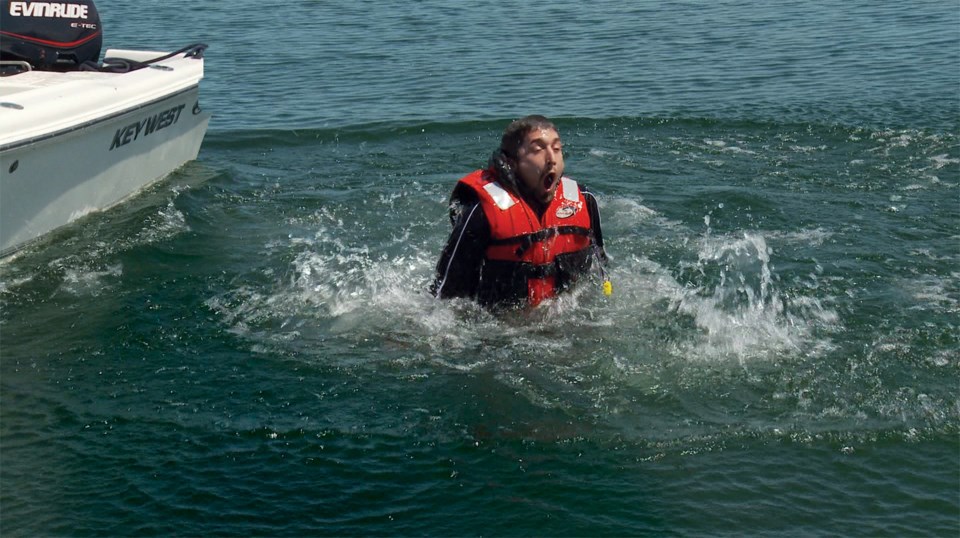April 18, 2018 Winnipeg, MB - The Canadian Safe Boating Council and the Lifesaving Society – Manitoba Branch want to remind you of the dangers of cold water immersion.
“At this time of year, Manitobans are usually thinking, or worrying about flooding” says Kevin Tordiffe, Lifesaving Society – Manitoba Branch Operations Manager. “Thankfully this year we seem to be getting a break.”
However, the dangers of cold water and ice still exist. There’s no better example than last weekend’s rescue of a woman found clinging to a partially submerged tree in the Red River in St. Norbert. Thankfully, someone heard her screams and called police. Winnipeg Fire Paramedic Service Water Rescue made an effective rescue. If you are planning to be near any waterways, be careful and think about water safety. Moving waters can change course and with ice buildup, overflowing banks can occur with little notice. “Stay away from waterways and ice at this time of year” says Tordiffe. “Boating in Manitoba is still about a month away and although we are all looking forward to it, please wait for the ice to be off the lakes and rivers.”
While never planned, incidents of people finding themselves in cold water happen more frequently that anyone can imagine. When it does happen, it starts with a cold shock; the gasp that can be deadly if the person’s head is underwater. It’s followed by approximately a minute of hyperventilation. During this period, many people panic thinking that hypothermia is imminent, and they drown. The main thing to remember is that, even in ice cold water, it takes at least 30 minutes for an adult to become even mildly hypothermic! After about a minute, breathing returns to near normal and it’s during the next 10 to 15 minutes, attempts to self-rescue are most important. As this time elapses, the nerves and muscles in the arms and legs cool to the point where they can’t keep the person afloat any longer. At this point, the person’s survival is dependent on their lifejacket or PFD to keep them afloat and their airway clear. It will take approximately one hour before the person loses consciousness due to hypothermia.
Dr. Gordon Giesbrecht, Professor of Thermophysiology at the University of Manitoba has encapsulated this one minute of hyperventilation, 10 minutes of meaningful movement and 1 hour of consciousness as the “1-10-1 Principle”.
Having a way to climb back into the boat without assistance is the most effective plan for self-rescue. If this is impossible as the boat has overturned, getting as much of the person’s body out of the water by climbing onto the overturned hull (or anything else that’s floating such as a cooler) will reduce the rate of cooling.
Should there be no means to get out of the water, the best approach is to stay very still and adopt the H-E-L-P (Heat Escape Lessening Position) position. If alone, the person should bring their knees up as close to their torso as possible and cross their arms over their chest. This will help protect vital organs. If with others, huddle together interlocking arms and legs pressing torsos together to preserve heat. The best approach however is taking preventative measures by dressing for the water temperature rather than the air. Thermal protective clothing, worn in layers, is extremely effective at staving off or at least delaying the onset of hypothermia until help arrives.
“Remember, there is no safe ice out there anymore, especially if you are a visiting NHL team” says Tordiffe. “Stay off the ice and stay safe. Plan for changing weather for any outdoor adventures, and of course, Go Jets Go!”




